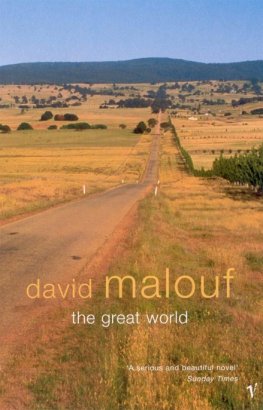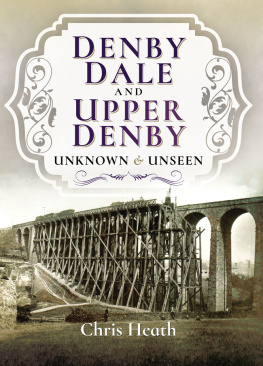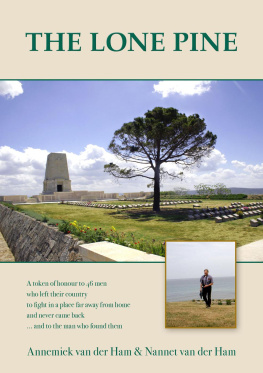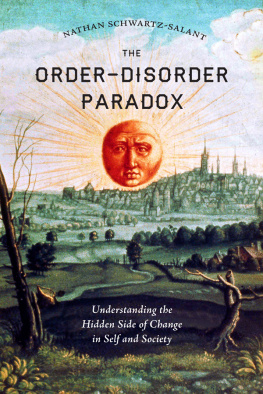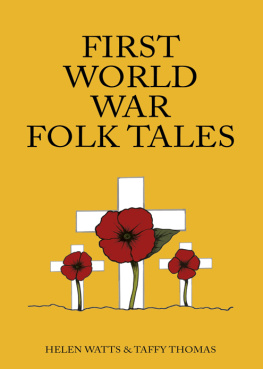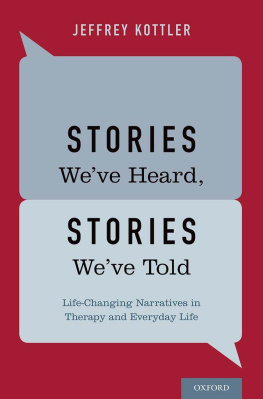
For Charlie and Evelyn
Dedicated to all the men and women from Carshalton
who served during the First World War
And did you leave a wife or sweetheart behind
In some loyal heart is your memory enshrined?
And, though you died back in 1916,
To that loyal heart are you always 19?
Or are you a stranger without even a name,
Forever enshrined behind some glass pane,
In an old photograph, torn and tattered and stained,
And fading to yellow in a brown leather frame?
Eric Bogle, No Mans Land
(Copyright Larrikin Publishers, Sydney)
In the course of my research I have been fortunate to have made contact with relatives and descendants of many of the men named on the memorial, and this book would not have been possible without the information they have provided and their permission to reproduce photographs and letters. In particular I am indebted to Mario Fuller, who is connected to no fewer than ten of the men on the memorial, and Rowena Preston, granddaughter of Frederick Parsons, for their continued support for my research and for encouraging me to develop it into a book. My thanks also go to Des Adams, Jackie Askew, Nick Cannon, June Davies, Ann Dowsing, Sue Ealing and family, Peter Etter, Paul Evans, Nick Fairbrother, Keith Fazzani, Stephen Glanville, Michael Hayball, Barbara Holmes, Sue Hutton, Hazel Kirby, Jean Lambert, Jane Morey, Liz Moss, Roger Pickering, Wendy Pogmore, Derek and Shirley Prothero, Glenys Rands, Cheryl Rogers, Barbara Russell, Lindsay Seagrim-Trinder, Nick Shepherd, Jim Shirley, Mike Stepney, Anne Stevens, Bryan Stokes, Jim Stracey and Susan Wicks.
Many other people have also provided me with information, records and photos of the men. Some have visited their graves in France and Belgium on my behalf. Much of the information in the book has been gleaned from sources held by Sutton Local Studies and Archives Centre, and I am very grateful to Kath Shawcross and the staff there for their help and assistance with my research, along with Margaret Thomas and Bev Walker from the Circle library in Carshalton. Special thanks also go to Steve Garnett, with whom I travelled to the battlefields on a bitterly cold February weekend in 2013, and who accommodated my many requests to stop at cemeteries where the Carshalton men lie. My thanks also go to All Saints church, Stuart Baxter, Eric Bogle and Larrikin Publishers, Gill Clarke (Churchers College), Humphrey Clarke (St Barnabas church), Peter Collins (archivist at Sutton Grammar School), Dick Flory, Mark Gardiner, Clive Gilbert, John Murray publishers for permission to quote from Martin Gilberts Somme: The Heroism and Horror of War, Russell Gore, Andrew Holmes, David Humberton, Simon Jervis, Peter Leonard and St Olaves School, Pam and Ken Linge, Andrew Lock, Bill MacCormick, Mick McCann (British War Graves), Neil Mackenzie, Penguin for permission to quote from Lyn MacDonalds 19141918: Voices and Images of the Great War, John Porter (Prudential), Susannah Schofield (Alleyns School), Frederik Sohier, Dave Stuckey, Michael Taylor, David Underdown, Neil Uwins, and William Wood for pictures of the old Whitgiftians, reproduced with the kind permission of the Headmaster of Whitgift School. To The History Press I am grateful for the opportunity to share the stories of the men and the belief that they are worth telling. My sincere apologies to anyone I may have missed from this list.
Finally, I would like to thank my family and friends, who have encouraged and supported me, not least my wife, who has tolerated my interest (some might say obsession!) despite a number of competing priorities over the last few years including wedding preparations, a house move and the birth of our daughter. For her support and understanding I am especially grateful.
Every reasonable effort has been made to trace copyright holders and the author welcomes correspondence on this matter from any sources where it has not been possible to obtain permission to quote.
All information presented has been researched and is evidenced where possible; however, due to the length of time that has passed since the war and the nature of some of the sources used, it is possible that some errors have been introduced. Any errors are mine alone, and any clarifications or additional information about these men will be gratefully received.
Note on the text: Any mention of the local paper in the text refers to the Wallington and Carshalton Advertiser .
Contents
Carshalton war memorial sits in an idyllic spot on the edge of the Carshalton ponds and was officially unveiled on 13 March 1921. A further dedication ceremony and opening of the Garden of Remembrance took place after the Second World War, in 1951.
The names of 249 men are inscribed on the memorials plaques. Although it is now dedicated to the men who fought and died in both world wars, almost all of the names on the memorial are from the First World War. At the time of writing a further memorial displaying the names of those who died in the Second World War has recently been unveiled in the Garden of Remembrance.
The motivation for compiling this record about the men named on the memorial came from my own experiences researching my family tree. In 2008 I found out that my great-great-uncle had been killed in the war. I started researching his military service and gradually pieced together the story of his life and death. Until then the sacrifices of those who had fought in the war, although always respected, had meant little to me personally. I started thinking about all those who died but have been forgotten, or who have no descendants to remember them. Around this time I paid my first visit to the Carshalton memorial, and looking at the names wondered about the stories behind them. My first trip to the Somme in April 2008 really reinforced the scale of the losses suffered during the war and the effect this must have had on communities across the country. Visiting memorials such as Thiepval on the Somme, one cannot help but be overwhelmed by the sheer number of names inscribed upon them. The countless cemeteries in the region feature row upon row of headstones, some named and some indicating only the final resting place of A Soldier of the Great War, Known Unto God. On my return from the Somme, I started researching the men recorded on Carshalton war memorial in earnest.
War memorials exist in almost every town and village yet most of the year are often passed by without a second glance. However, with the centenary of the First World War now upon us, it is clear that the war remains a subject that evokes passionate feelings and fierce debate. Those who fought in the conflict and survived are gone; it is therefore now more important than ever to keep alive the memories of those who laid down their lives. As Martin Gilbert expresses in his book about the Somme campaign, Every headstone in each cemetery, each name on the long lists of those whose bodies were never found, hides a human being, a man, a story, a cry of pain and a grieving family. The aim of this book is to tell some of these stories.
Notes
There are four names from the Second World War and two from subsequent conflicts (Aden and Northern Ireland).
Thiepval memorial to the missing has over 72,000 names inscribed on it.
Gilbert, Martin, Somme: The Heroism and Horror of War (John Murray, 2007), p. 266. Copyright Martin Gilbert 2006. Reproduced by permission of the publisher John Murray.
Next page

